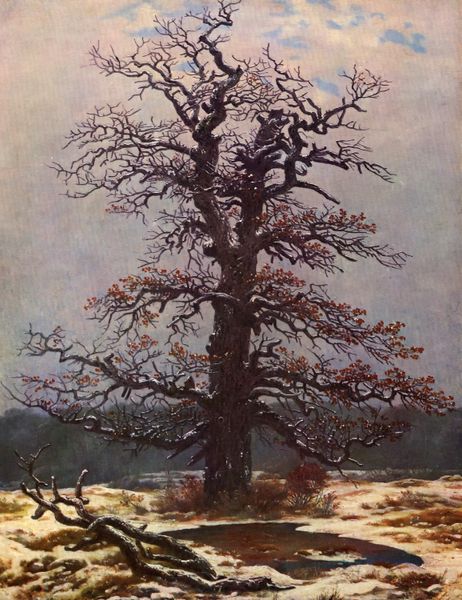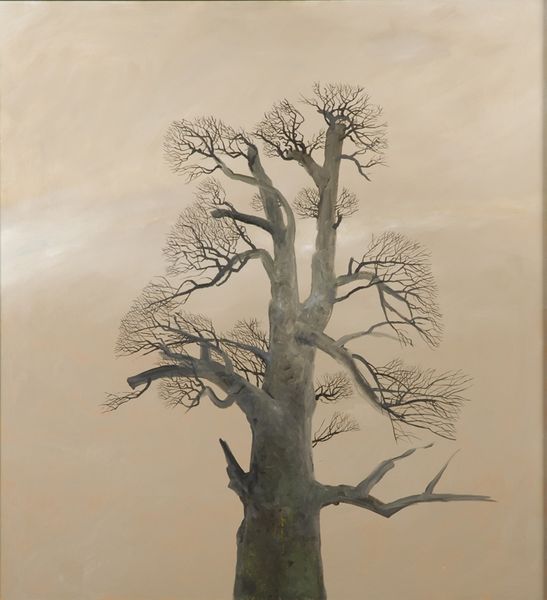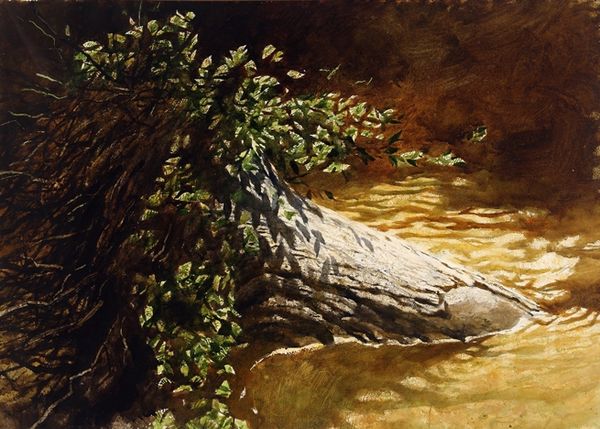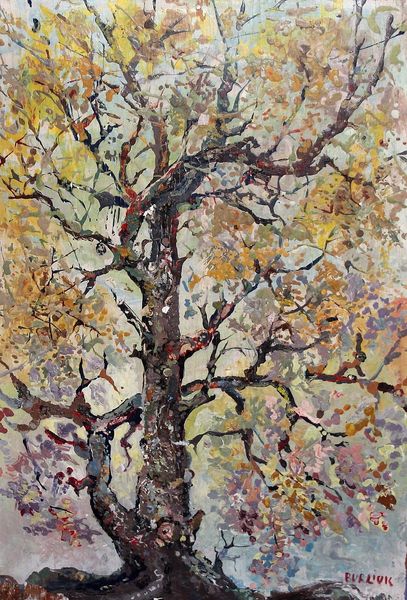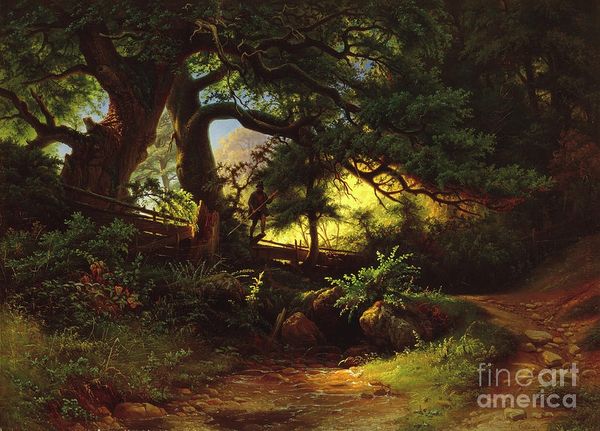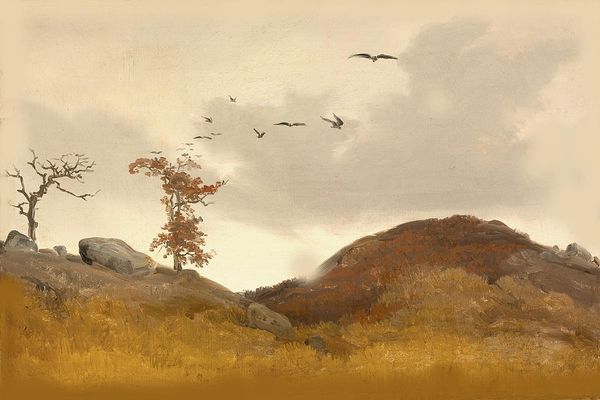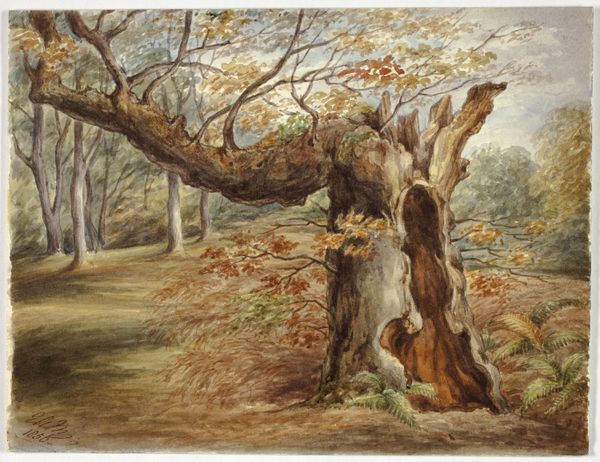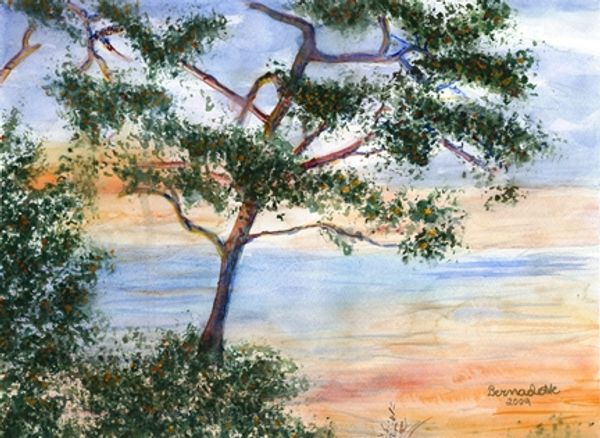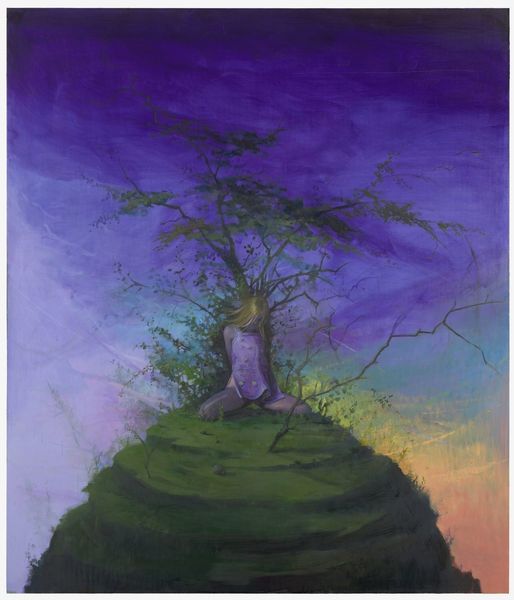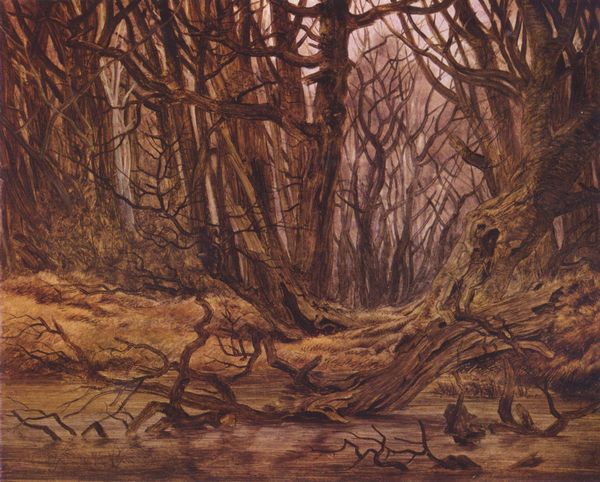
painting, oil-paint
#
tree
#
painting
#
oil-paint
#
landscape
#
figuration
#
romanticism
#
line
#
nature
Dimensions: 73 x 59 cm
Copyright: Public domain
Curator: Friedrich's "The Tree of Crows", painted in 1822 and now residing here at the Louvre, strikes me as a powerful depiction of Romanticism. Editor: It certainly evokes a sense of solitude and foreboding. The bare branches, the darkening sky...it's undeniably melancholic, almost gothic in its sensibility. Curator: Absolutely. We can interpret the flock of crows as symbols of death or impending doom, common tropes of the Romantic era. Friedrich, however, situated his art within the socio-political unrest of post-Napoleonic Europe. Perhaps, these crows are representative of political disruption and popular discontent after a moment of restoration, much as we think of crows in popular culture today. Editor: I can see that. Crows do represent more than simple death, as potent, multifaceted symbols deeply entwined with mythology. Across cultures, crows connect the mortal world with the spiritual, guiding souls or portending shifts in destiny. In this painting, they underscore an awareness of cultural memory and tradition. Curator: The cultural lens reveals a lot, particularly how Friedrich grapples with the sublime, making manifest the era’s complex relationship to nature, simultaneously a source of spiritual solace and unsettling uncertainty, a kind of beautiful nightmare for many then, but also still resonant today given, for example, the Anthropocene. Editor: The skeletal branches reaching into that dawn sky - and notice the slight, reddish blooms - form almost an elaborate net, further adding to a feeling of entangling destiny and a connection across timelines. Curator: Right, we see Friedrich confronting nature in the aftermath of profound cultural change, perhaps making sense of historical shifts on the level of identity. This painting gives us an uncanny picture of how societies process grief. Editor: And perhaps reveals our connection to generations past. These recurring motifs transcend individual artists or specific moments in time. Curator: It is a work, isn't it, that challenges us to consider art beyond aesthetics? To see it as part of a living, breathing narrative about who we are and where we come from. Editor: Definitely, to be aware of not just visual patterns, but symbolic and societal patterns, as well. Thank you, I will certainly carry these impressions.
Comments
No comments
Be the first to comment and join the conversation on the ultimate creative platform.

